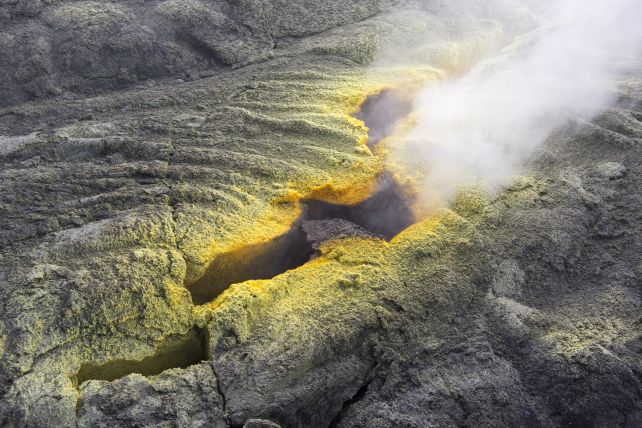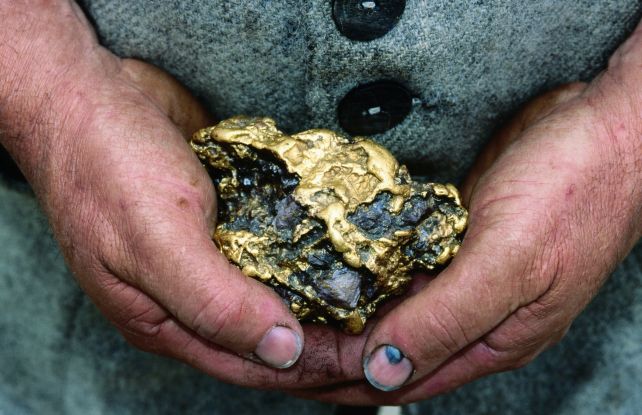It Literally Takes Fire And Brimstone to Transport Gold to Earth's Surface
 An artist's impression of a planetary crust. (The University of Michigan/Midjourney)
An artist's impression of a planetary crust. (The University of Michigan/Midjourney)Two new papers have agreed that some forms of sulfur form molecular bonds with gold that would otherwise remain sequestered in the mantle, allowing the precious element to rise.
What they don't quite agree on is which form of sulfur is most important.
According to numerical modeling and experiments conducted by a team of geologists led by Deng-Yang He of the China University of Geosciences, trisulfur is key. But, according to experiments conducted by Stefan Farsang and Zoltán Zajacz of the University of Geneva, bisulfide is the crucial player.
Both sets of results are interesting and worth following up – because understanding how gold deposits form can help us make the most of this beautiful, valuable, and useful resource.

Gold deposits are often associated with volcanic activity at places where tectonic plates meet. There, the edge of one tectonic plate can slip beneath the adjacent plate, creating what is known as a subduction zone. Interactions between the two plates create a region riddled with earthquakes and volcanoes, such as the long volcano chain known as the Pacific Ring of Fire.
The gold in these deposits originates deep below Earth's surface, in the mantle. Left to its own devices, there the dense metal would stay; but it gets incorporated into the magmas that rise up via volcanic activity to the surface, where it is deposited.
Scientists believe the key to its transport is sulfur. Sulfur bonds strongly with heavy metals, including gold. But what form that sulfur takes to transport gold through Earth's subduction zones is a topic of debate among Earth scientists.
- This complex, their calculations showed, can transport gold concentrations of several grams per cubic meter of fluid – more than three orders of magnitude higher than the average abundance of gold in Earth's mantle. It's an extremely efficient means of slurping the gold out of the mantle and dumping it into the crust.
"This offers the most plausible explanation for the very high concentrations of gold in some mineral systems in subduction zone environments."

Previous experiments, including a heavily cited 2011 paper, had shown that trisulfur was responsible for the transport. The new results showed that bisulfide, hydrogen sulfide, and sulfur-dioxide were all strongly present at magmatic temperatures.
This is interesting, because bisulfide plays a role in metal transport in hydrothermal fluids, which are lower in temperature. It was thought that bisulfide couldn't exist at magmatic temperatures; but the work of Farsang and Zajacz found that it can.
"By carefully choosing our laser wavelengths," Farsang says, "we also showed that in previous studies, the amount of sulphur radicals in geologic fluids was severely overestimated and that the results of the 2011 study were in fact based on a measurement artefact, putting an end to this debate."
Them's fightin' words. Your move, trisulfur.
The two papers have been published in the Proceedings of the National Academy of Sciences, and Nature Geoscience, respectively.


No comments:
Post a Comment